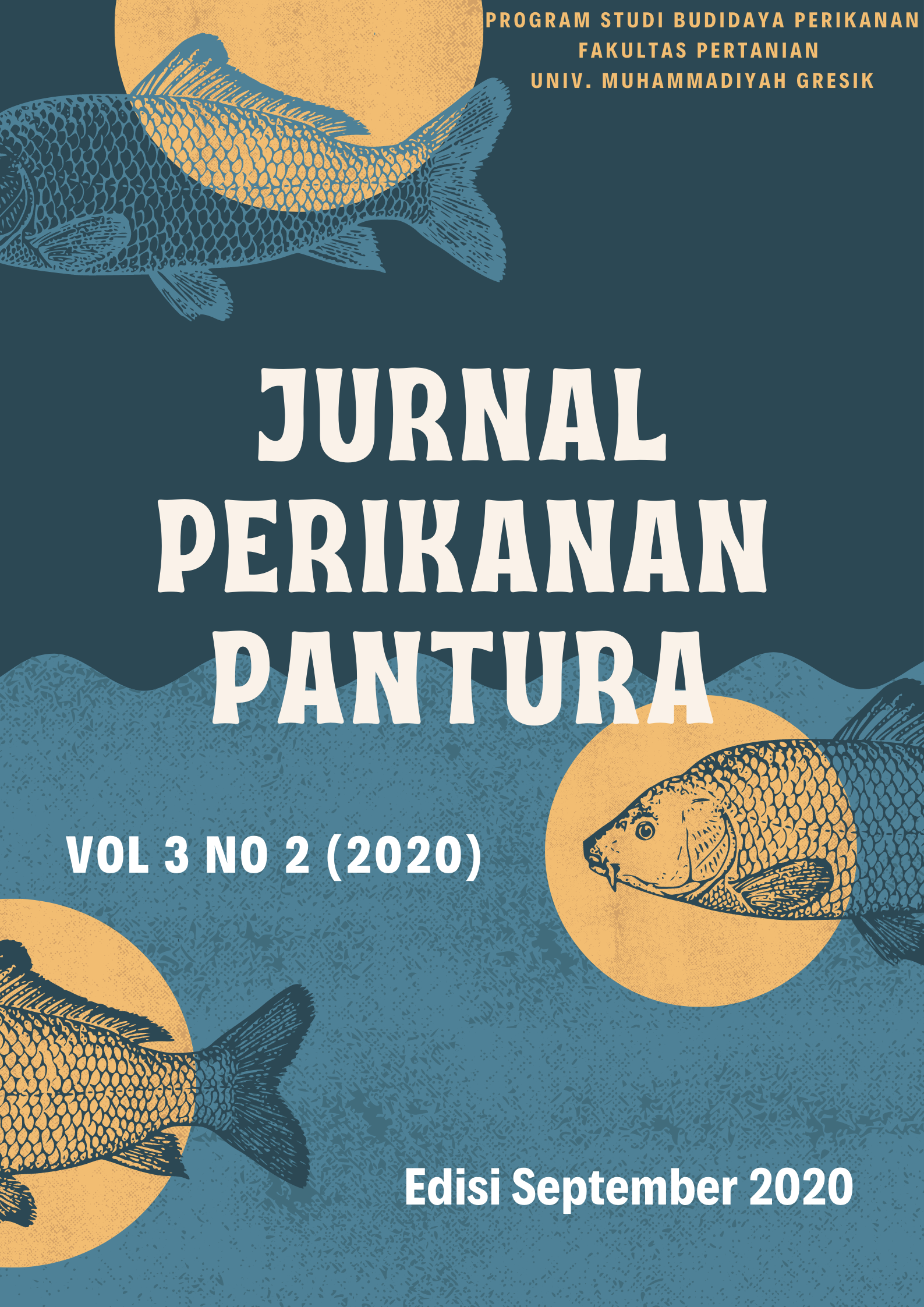OPTIMASI SISTEM BUDIDAYA POLIKULTUR DENGAN PENENTUAN KOMPOSISI ORGANISME YANG BERBEDA ANTARA BANDENG (C. chanos), UDANG VANAME (L. vannamei), DAN RUMPUT LAUT (G. verucoss)
Abstract
The application of polyculture cultivation techniques is expected to increase the carrying capacity of farmland in certain circumstances, where production growth will remain stable. In this study, to be cultivated with a polyculture system are bandeng (C. chanos), shrimp vaname (L. vannamei), and seaweed G. verucossa. The increase in productivity of ponds (optimization) can be seen by the increase in fish production related to solid spread in cultivation media. The priority of this study is to examine the difference in density of bandeng, shrimp and seaweed in the polyculture system. The design in this study is to use complete randomized design (RAL) with 3 treatments, each treatment has 3 replays so there are 9 experimental units. The variables observed are absolute weight and Specific Growth Rate (SGR). The results of this study show that the determination of the composition of different organisms in the polyculture system gives a real influence on absolute weight and SGR with the best treatment for absolute weight is treatment A (density of shrimp and bandeng 10 tails/m2, 250 g/m2 seaweed) is 40.73 g, and the best treatment for SGR is treatment A (shrimp density and bandeng 10 tails/m2, seaweed 250 g/m2) of 1.15 %BB/Day.







